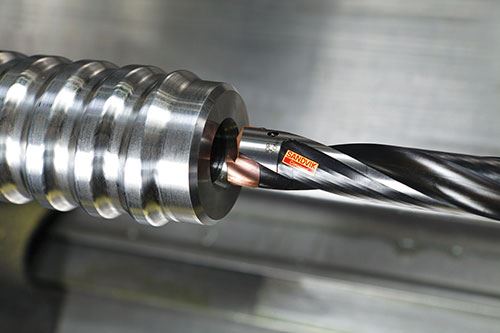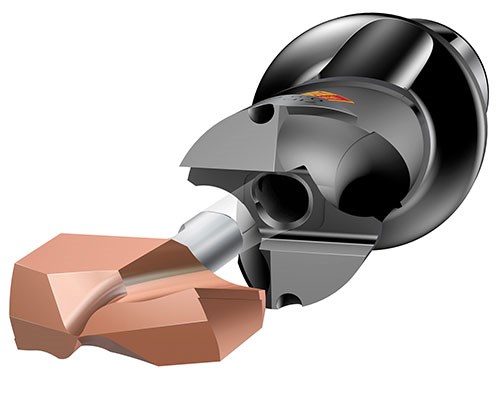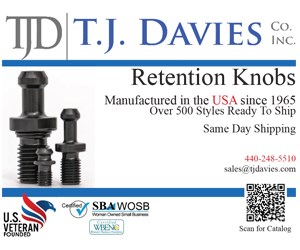Cutting a sirloin with a scalpel rather than a steak knife wouldn’t make much sense, but Jack Lynch has seen shops doing the equivalent of just that in his role as senior product specialist at cutting tool supplier
Sandvik Coromant (Fair Lawn, New Jersey). He reports that some buyers of the company’s exchangeable-tip Corodrill 870 had previously been using precise—and costly—solid carbide drills to machine holes that would later require secondary operations to meet specifications anyway. By contrast, other shops had been burning too quickly through boring and reaming tools tasked with finishing holes that were created with relatively less precise, indexable-insert-style drills. In either scenario, the exchangeable-tip drill invariably proved to be a more cost-effective alternative.
This type of drill is a recent tool development relative to its solid carbide and indexable-insert cousins, and scenarios like those above illustrate the importance of knowing when and how to apply it. Although the best drill choice is always dependent on a number of application-specific variables, Mr. Lynch says hole diameter and tolerance are two of the most basic considerations. In both respects, exchangeable-tip models occupy a middle ground between the other two common drill types.
For their part, solid carbide drills’ single-piece construction provides the rigidity required for precise machining of holes with smooth surface finishes and tight tolerances, typically in the range of IT8 or IT9 as defined by ISO standards. Given the expense of carbide and the fact that high-accuracy drilling tends to involve smaller holes, the vast majority of Sandvik’s solid carbide drills have diameters measuring less than 3/4 inch, Mr. Lynch says.
At the other end of the spectrum are the company’s Corodrill 880 indexable-insert drills, which are available in standard diameters ranging from 12 to 63.5 mm (0.472 to 2.5 inches). Although a design employing carbide inserts mounted to a steel shank is inherently less rigid than a one-piece solid carbide tool, these drills are still accurate enough for larger-diameter, more forgiving holes with tolerances of IT12 or greater. The ability to employ replaceable inserts in a variety of grades and geometries also provides flexibility advantages. Namely, there is no need to regrind worn cutting edges, nor to stock large quantities of tools for different materials and operations.
Combining the advantages of both designs, the exchangeable-tip Corodill 870 can prove more effective than either for holes with diameters ranging from 9.5 to 33 mm (0.374 to 1.299 inches) and tolerances ranging from IT9 to IT11. While not as rigid as a single-piece construction, it is still more precise than indexable-insert tools because the exchangeable tip is a single piece of carbide that machines the entire diameter of the hole. This is more similar to a solid carbide drill than a tool that relies on multiple inserts located at inner and outer positions on the shank, Mr. Lynch says. However, the steel body is more forgiving of less-stable machine setups than solid carbide, and the drill offers the same flexibility advantages as indexable-insert models. Additionally, tip options for a given shank size include not only multiple grades and geometries, but also multiple diameters. This offers further potential for flexibility and drill inventory reductions.
The Corodrill 870 also offers benefits not shared by the other two drill series. For instance, the tip can be exchanged without removing the drill from the toolholder. This is possible because the tip locks into place via a side-mounted set screw that is easily accessible to operators, Mr. Lynch says. A semi-cylindrical guide pin that interfaces with a matching seat in the middle of the shank’s diameter keeps the tip on-center and ensures proper loading. Other notable features include variable-helix flutes for chip evacuation and stability; a cutting edge designed to reduce cutting forces as well as improve chip control and penetration rates; and carbide grade GC4234, which combines crater and flank wear resistance for improved tool life and productivity, Mr. Lynch says. The drill is currently available in configurations for cutting steel and cast iron, and the company will soon introduce a version for stainless steel.


























